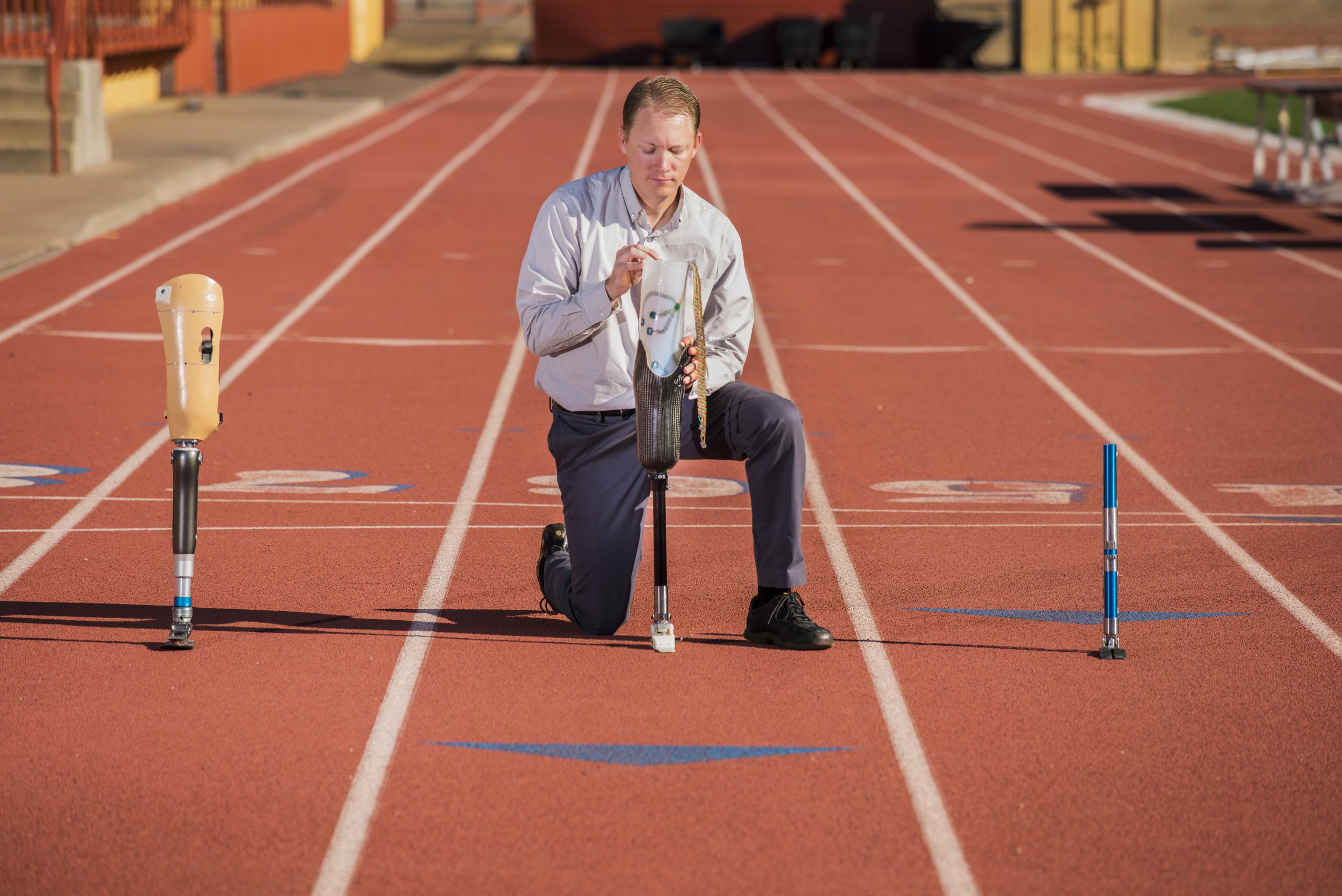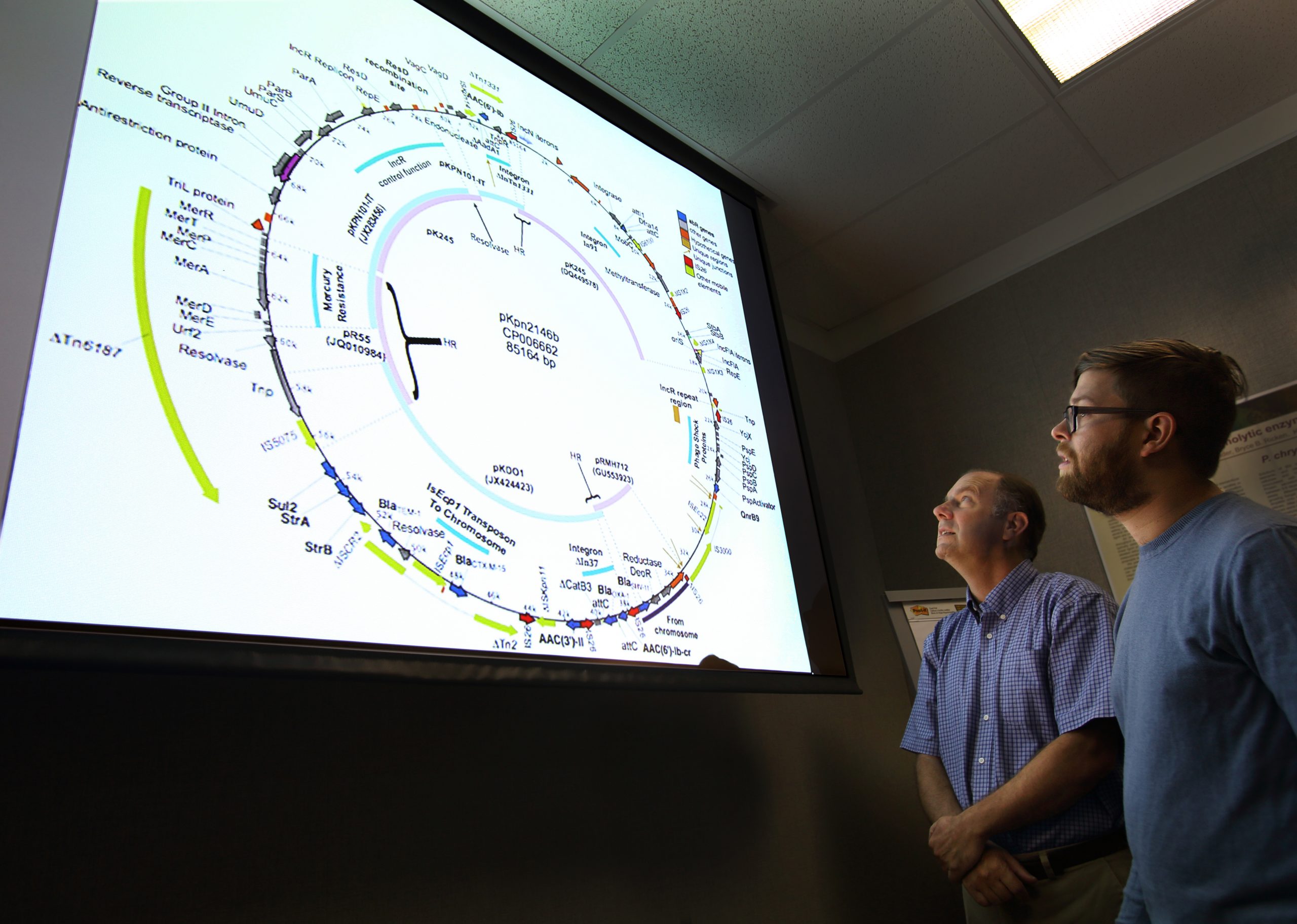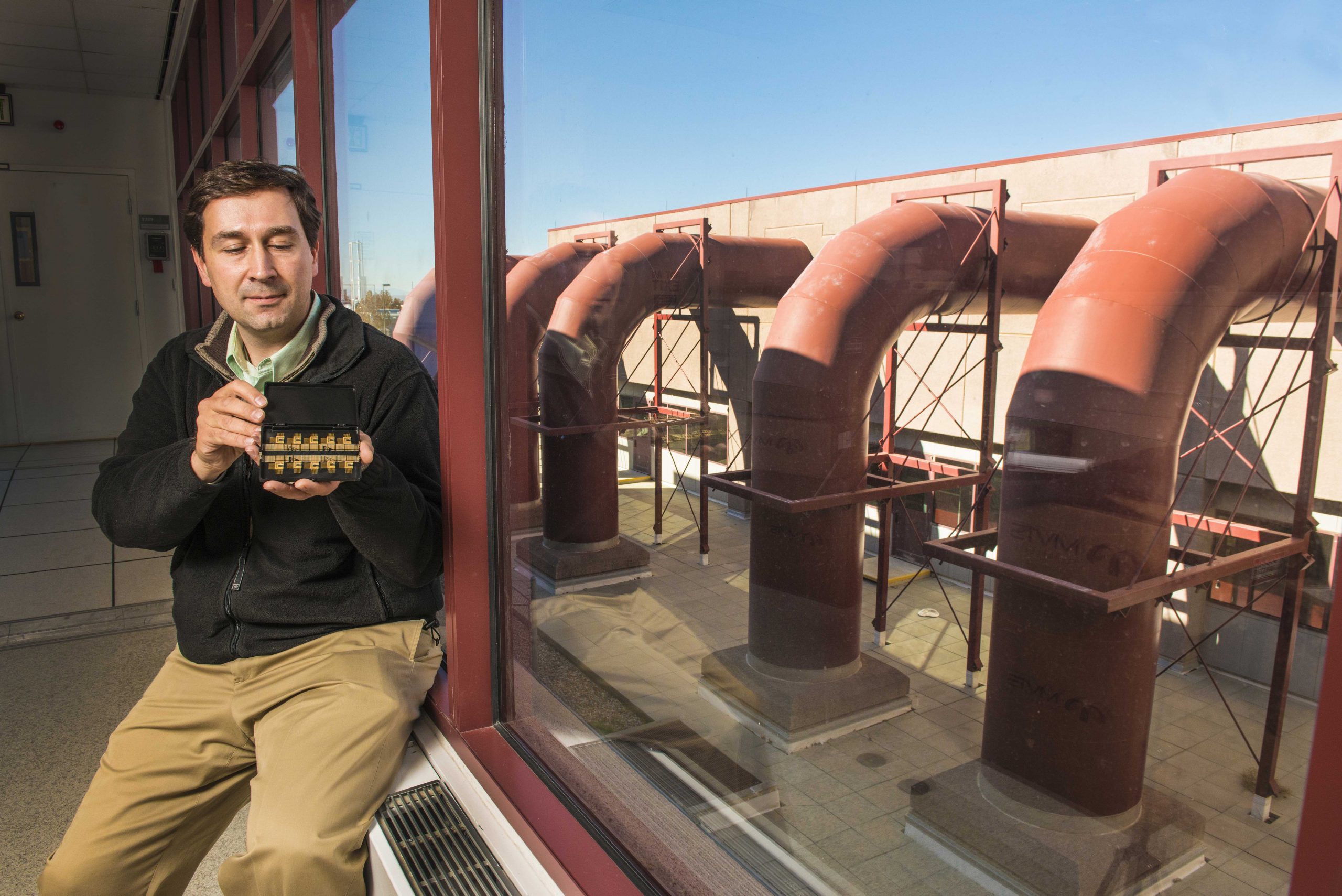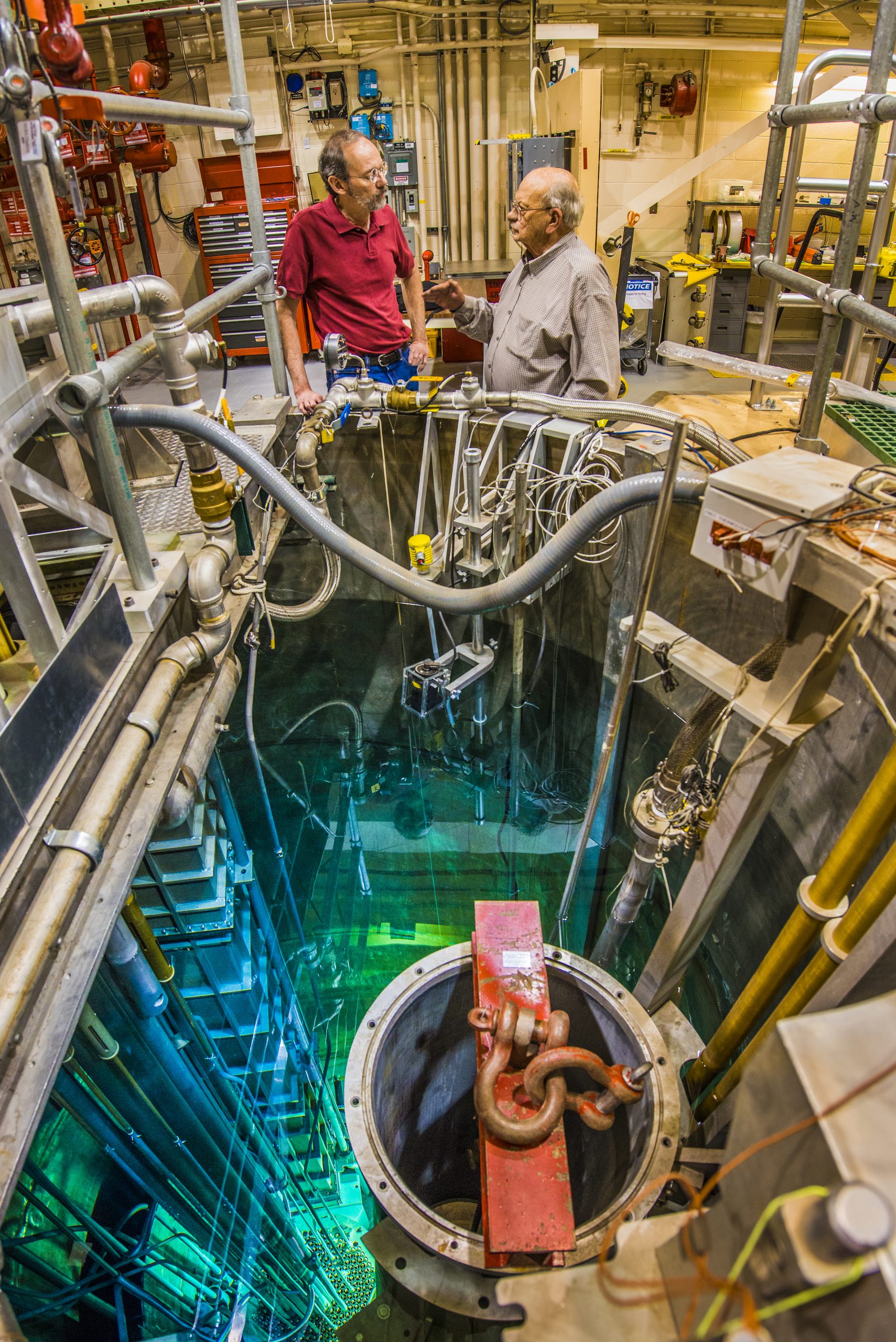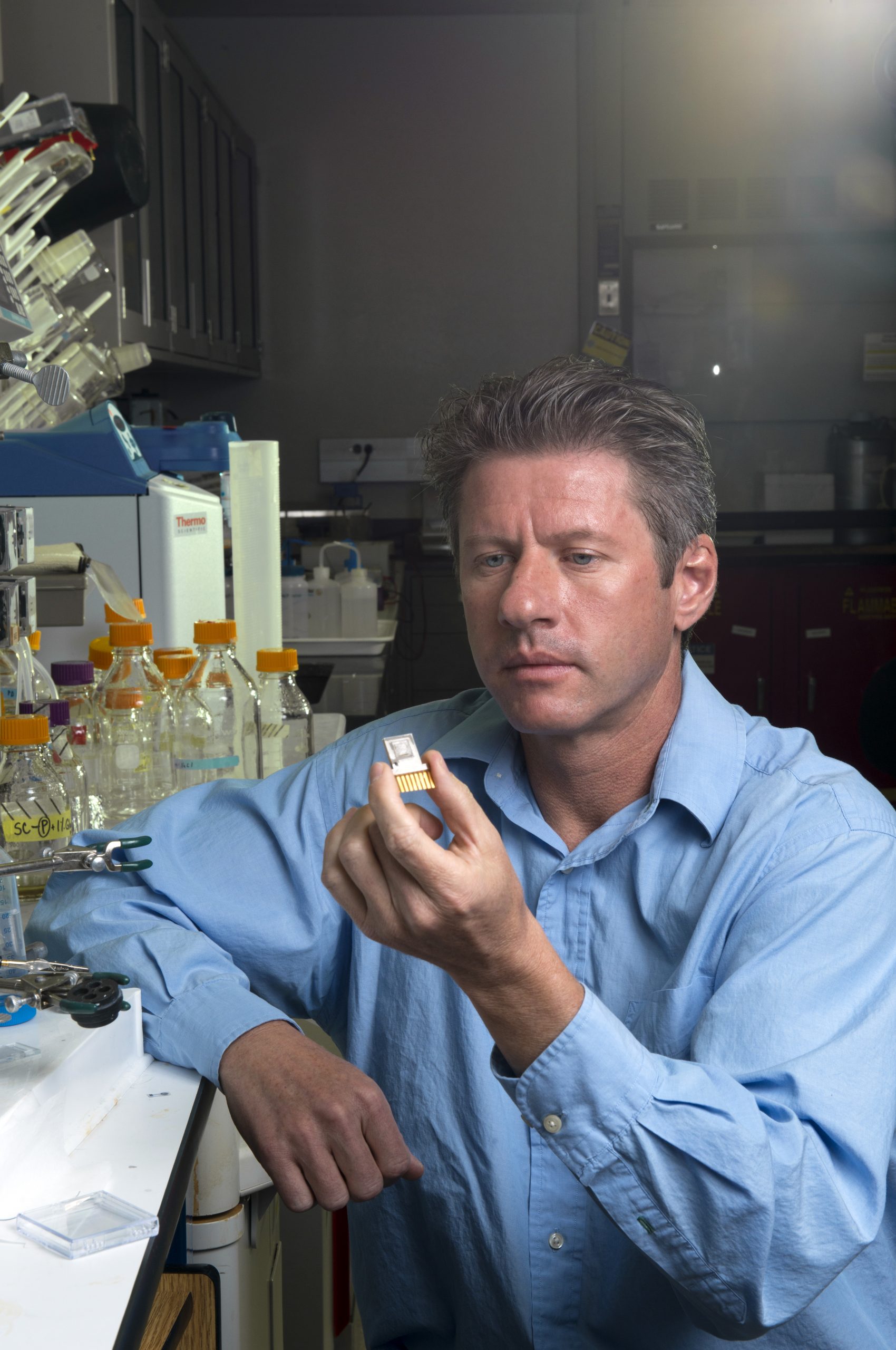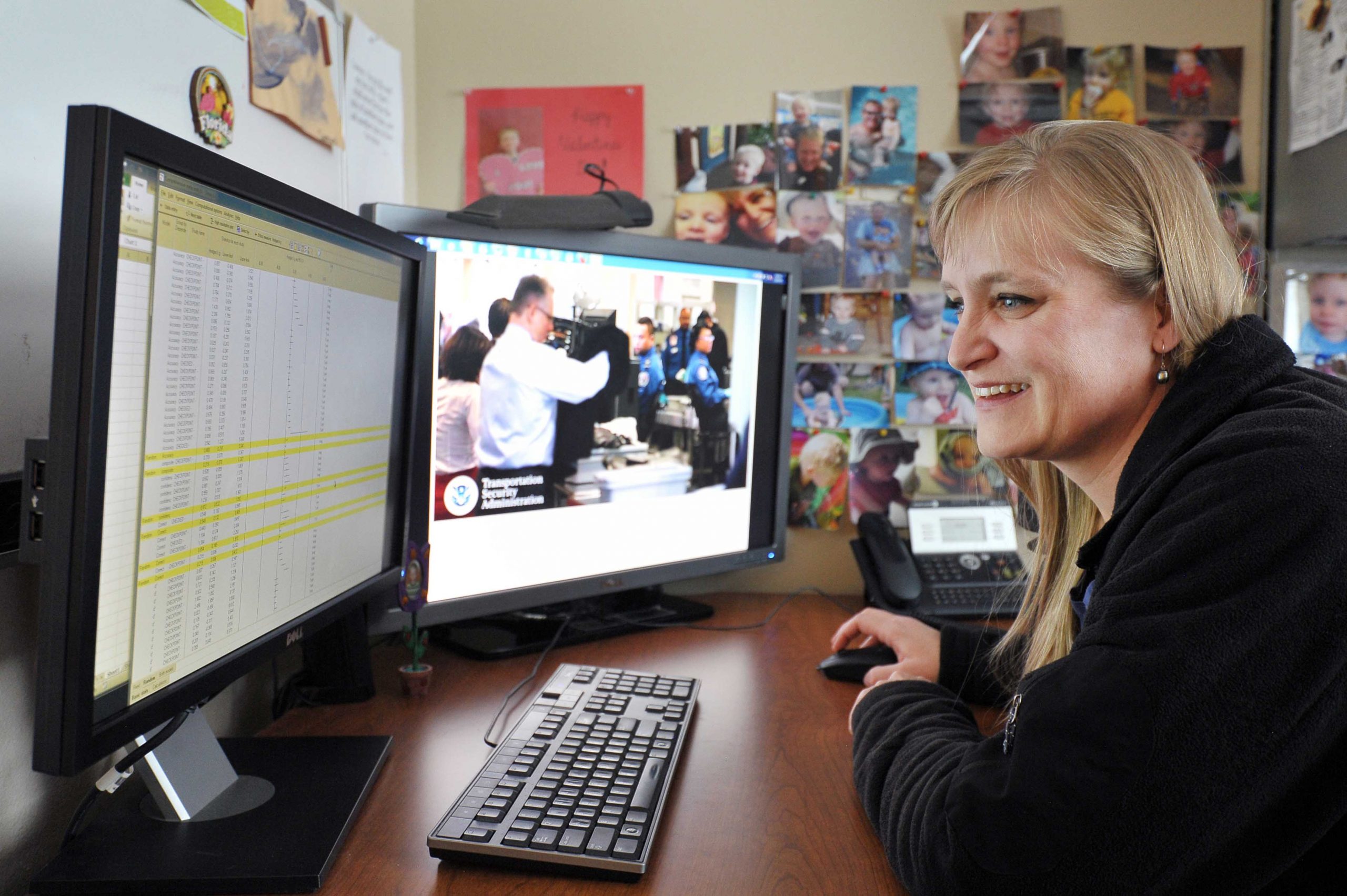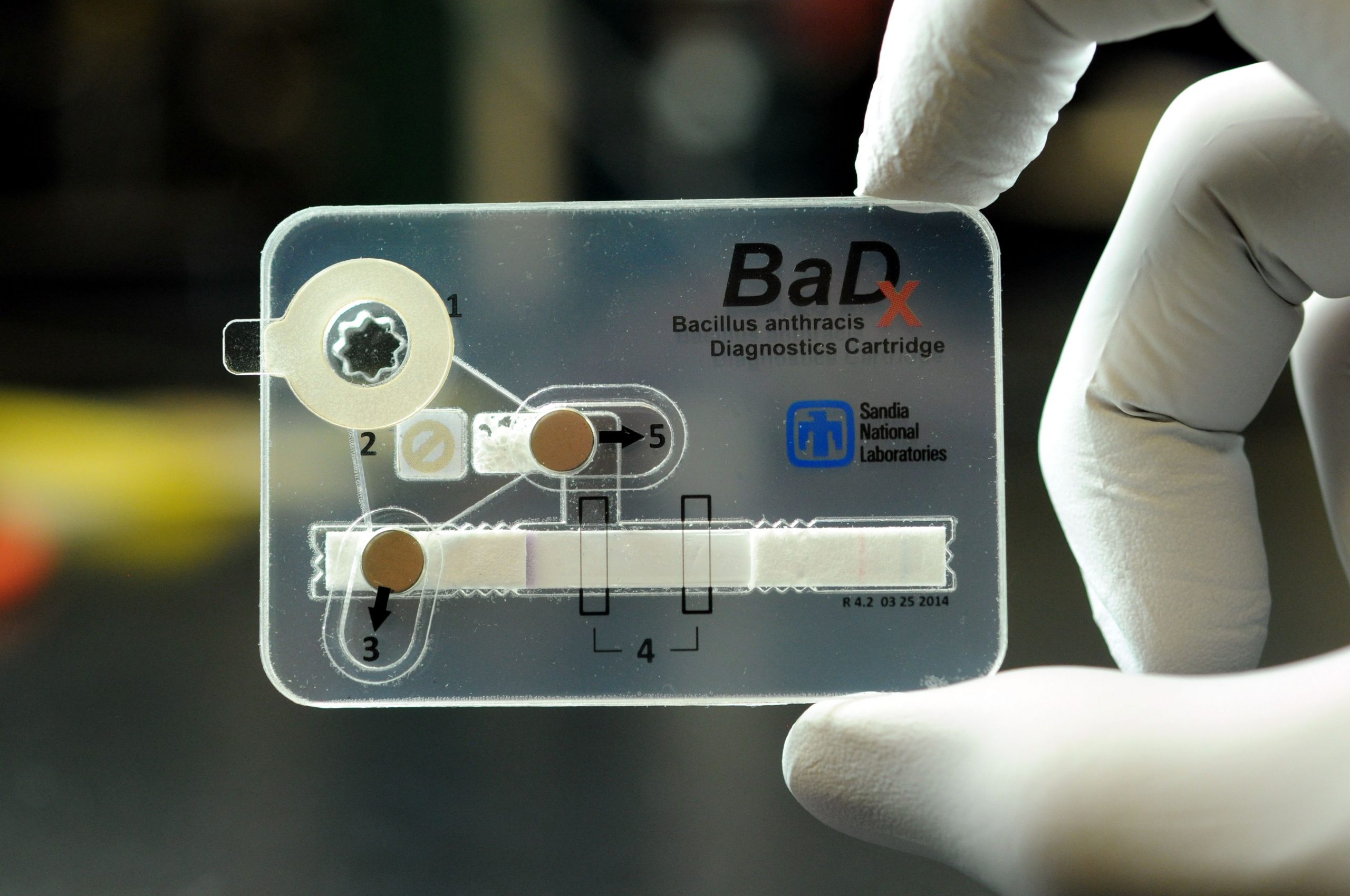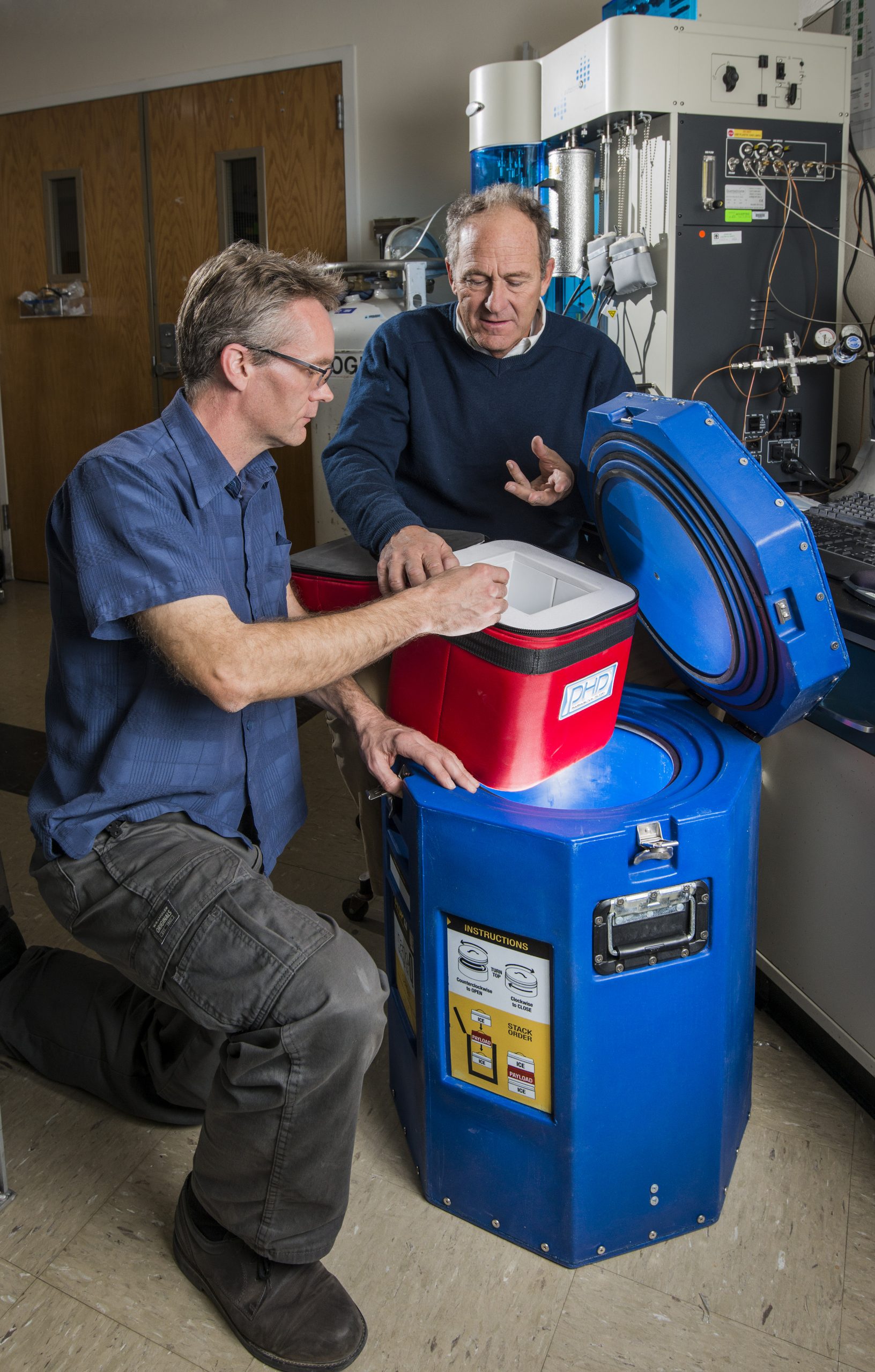October 14, 2014 • ALBUQUERQUE, N.M. — As an amputee walks on a prosthetic leg during the day, the natural fluid in the leg shifts and the muscles shrink slightly.[caption id="" align="alignright" width="250"] Sandia National Laboratories researcher Jason Wheeler demonstrates a liner aimed a…
